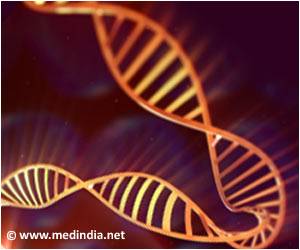- Parkinson’s disease is a degenerative disorder of the brain and has no cure at present.
- Genetic mutation causing low levels of expression of parkin protein is known to cause Parkinson’s disease.
- Study identifies stress hormone cortisol as the cause of the over-expression of parkin protein and prevent as well as be a possible cure for Parkinson’s disease.
The research team performed assays to evaluate gene expression, using a wide range of chemicals to identify substances that could increase parkin expression. The team hoped that their research would succeed in finding a potential cure for this debilitating condition.
Methods and Findings of the Study
To evaluate levels of parkin expression, the team of scientists performed a luciferase assay employing various chemicals in cell and animal model based experiments. Among the various chemicals tested that were found to increase the levels of parkin protein expression, the following results were observed.
- Hydrocortisone showed the most favorable profile in terms of increasing parkin expression, and protecting the cell from oxidative damage and stress.
- Hydrocortisone mediated expression of parkin via the CREB (cAMP response element-binding protein) pathway, which is a cellular transcription factor that regulates gene expression.
- Hydrocortisone was able to prevent 6-hydroxy dopamine (a toxin) induced neuronal loss by increasing parkin expression, thus demonstrating its neuroprotective effect.
- Blocking the glucorticoid receptor abolished the favorable response of inducing parkin expression, suggesting that the physiological cortisol signaling pathway has a role to play in parkin expression.
The PRKN gene provides instructions for the expression of a protein called parkin. This protein parkin is critical to the removal of damaged organelles, unwanted and toxic cellular accumulations by tagging them to molecules termed ubiquitin. The ubiquitin then disposes these cellular toxic accumulations via specialized structures called proteasomes.
When this cellular scavenging system goes awry, there is damage to and destruction of the dopaminergic neurons in the brain leading to Parkinson’s disease.
Scope of the Study
The findings of the study suggest that PD patients, especially those with an impaired hypothalamic-pituitary (HPA) axis resulting in low serum cortisol levels, would benefit from therapeutic supplementation of hydrocortisone.
More research may be required before establishing the safety and efficacy of hydrocortisone in PD, but initial findings appear promising.
The senior researcher Yoon-Il Lee stated "The significance of this study is that it has identified that the expression of parkin protein induced by a moderate level of stress hormone cortisol could be an important factor in maintaining the viability of dopaminergic neurons. We will continue to conduct follow-up studies such as clinical studies so that the Parkinson's disease will be curable in the future."
References:
- Parkin structure and function - (https://www.ncbi.nlm.nih.gov/pubmed/25712550)
- Dual Luciferase Assay System for Rapid Assessment of Gene Expression in Saccharomyces cerevisiae - (https://www.ncbi.nlm.nih.gov/pmc/articles/PMC1214206/)
- PRKN gene - (https://ghr.nlm.nih.gov/gene/PRKN)










